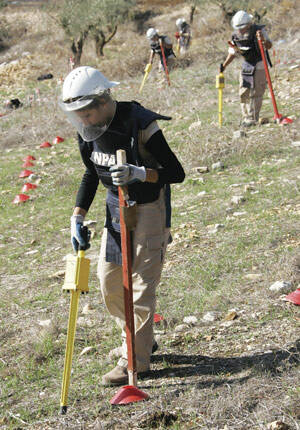Millions of stockpiled cluster submunitions have been destroyed years ahead of deadlines mandated by the Convention on Cluster Munitions—a treaty banning the weapon that went into force in August. Seven states that have joined the convention have already completely demolished their stockpiles of cluster munitions, destroying more than 13.8 million submunitions contained in 176,000 cluster munitions.
That this milestone was reached so rapidly demonstrates the treaty’s effectiveness in saving civilian lives, according to Cluster Munition Monitor 2010, a report released on Nov. 1. “There is real momentum behind the ban on cluster munitions,” said Steve Goose of Human Rights Watch, a contributing editor to the report.
But one holdout is significant enough to dampen any long-term success of the drive to rid the globe of cluster munitions. The United States remains one of the nonsignatory states to the convention and one of the world’s leading producers and deployers of cluster bombs. Ironically it is also one of the world’s most generous funders of efforts to clean up the lethal materials left behind. The United States has been the largest contributor to clearing cluster munitions in Laos, for example, where it dropped more than 270 million submunitions between 1964 and 1973.
The United States has shown little interest in multilateral efforts to ban cluster bomb munitions and is a major supplier of such weapons to Israel, which put them to use in Lebanon in 2006, where unexploded “bomblets” remain a significant menace. The United States was not expected to participate in a cluster munitions conference held from Nov. 9 to 12 in Laos. Other convention holdouts and producers of cluster ordnance include China, India, Pakistan, Israel and Russia.
Cluster bombs open when deployed, releasing hundreds of lethal anti-personnel “bomblets.” Unfortunately, long after hostilities cease thousands of unexploded bomblets remain scattered behind, which can maim or kill farmers, children and livestock years, even decades later. The convention obliges signatory states to end use, production and transfer of cluster munitions, destroy stockpiled cluster munitions within eight years of joining the convention, clear land contaminated by cluster munitions within 10 years and assist the victims of these weapons. Among the 108 countries that have signed the convention are 38 former users, producers, exporters or stockpilers of the weapon.
Cluster munition contamination remains in at least 23 states and three disputed areas. In 2009, there were 100 new confirmed cluster munition casualties. Half of these casualties occurred in just two states, Laos and Lebanon.








